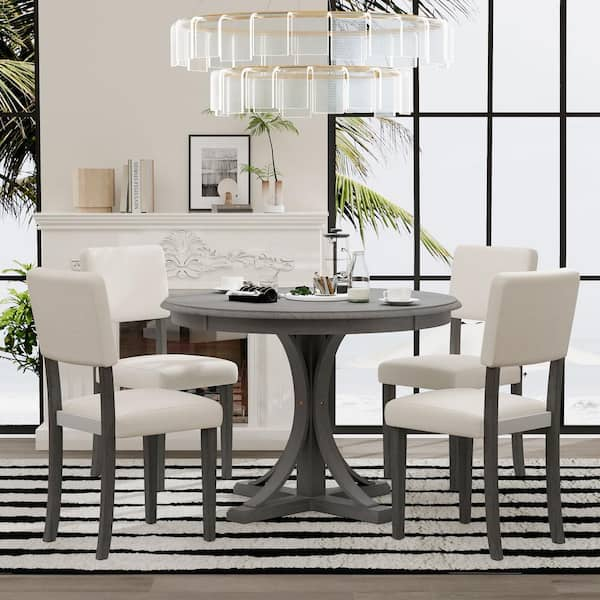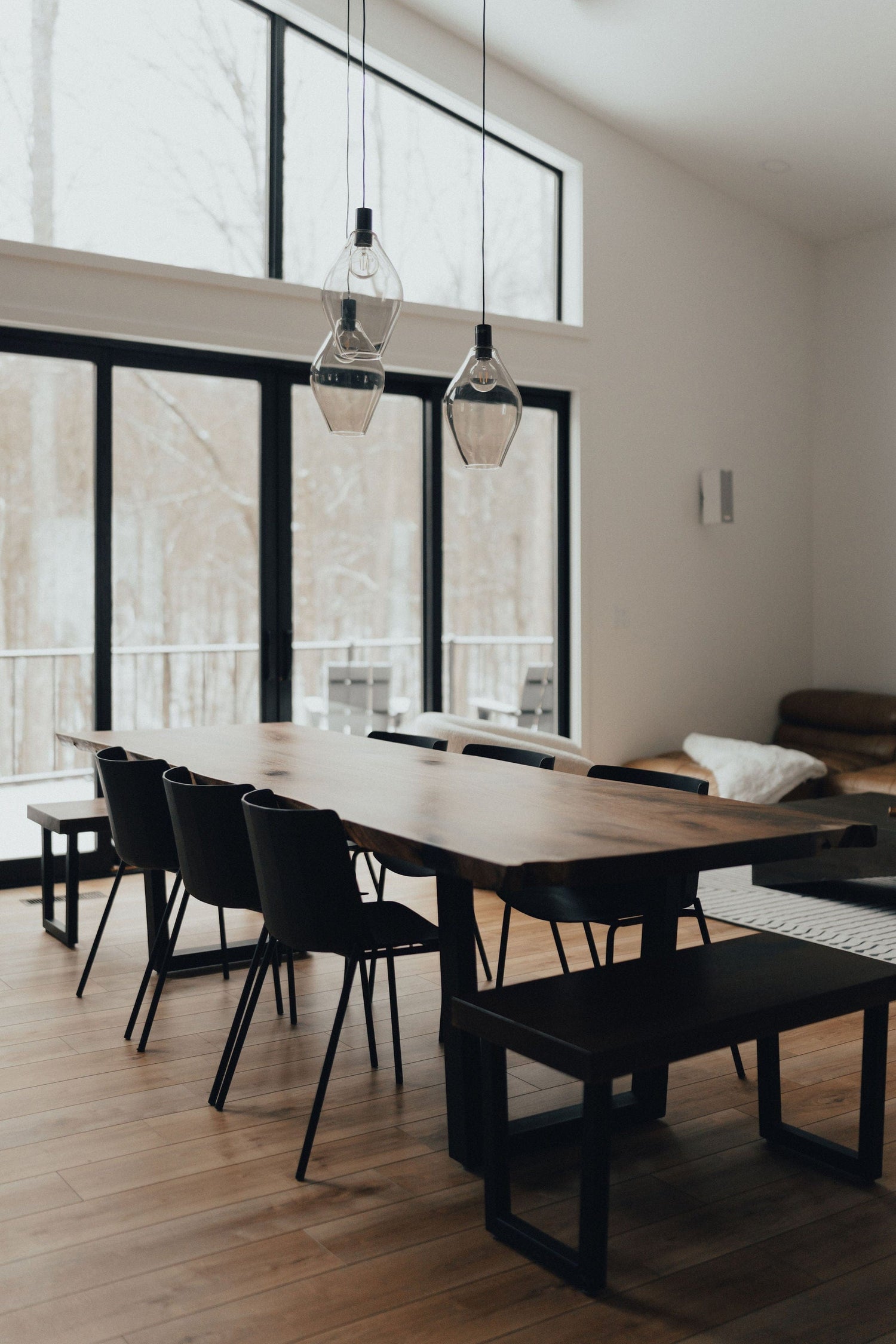Unique Dining Room Table Legs That Will Elevate Your Dining Area
Unique Dining Room Table Legs That Will Elevate Your Dining Area
Blog Article
From Typical to Modern: Find the Ideal Dining-room Table Legs for Your Style
While traditional layouts such as cabriole and turned legs evoke a sense of ageless elegance, modern designs like hairpin and geometric alternatives offer a possibility for striking visual interest. As you think about these components, the inquiry continues to be: exactly how can you flawlessly incorporate these diverse leg styles to create a harmonious eating experience?
Understanding Table Leg Styles
The selection of dining room table leg styles can considerably influence both the visual appeals and performance of the area. Each leg style contributes special practical functions and visual elements, accommodating varied style preferences and usage requirements. Recognizing these designs is important for choosing the best dining table that straightens with your overall interior layout vision.
As an example, tapered legs supply a clean, traditional look that can improve a space's elegance, while stand bases supply stability and make the most of legroom, making them excellent for smaller sized rooms. Hairpin legs, a characteristic of mid-century modern-day style, introduce an industrial panache, enabling for a ventilated, open feeling. Trestle legs evoke rustic beauty, providing durable support and a sense of eternity.
Furthermore, the option of products plays a considerable function. Wooden legs can bring warmth and structure, whereas steel options frequently communicate a sleek, contemporary vibe. Ultimately, recognizing table leg designs is necessary for creating a natural eating area that reflects personal style while ensuring practicality and comfort. By thoughtfully thinking about these elements, you can boost both the useful and aesthetic allure of your eating room.
Standard Table Leg Options
When selecting dining area table legs, typical alternatives usually symbolize ageless beauty and craftsmanship. These layouts show a rich heritage and a dedication to quality, making them excellent for those that appreciate classic appearances.
Among one of the most renowned traditional leg styles is the cabriole leg, defined by its stylish rounded form. This design usually features attractive carvings and is most typically located in Queen Anne and Chippendale furnishings. One more popular option is the transformed leg, which flaunts a collection of smooth, rounded forms that provide a timeless appearance while keeping security.
In addition, the straight leg, while straightforward, provides a strong and basic framework that can blend seamlessly with a variety of tabletop designs. For those attracted to ornate outlining, claw-and-ball feet legs stimulate a sense of grandeur and can work as a stunning focal factor in any type of dining space.
Last but not least, pedestal bases, although not purely legs, supply an alternative conventional alternative that permits adequate legroom and can be perfectly carved. Each of these traditional leg styles adds to the general ambiance of a dining-room, marrying feature with visual appeal.

Modern Table Leg Layouts
Modern table leg designs supply a diverse array of styles that emphasize cutting-edge products and clean lines. These styles frequently focus on capability while working as striking focal points within an eating space. Minimal appearances prevail, with legs crafted from products such as steel, glass, and engineered wood, which contribute to a airy and contemporary feeling.
One preferred design is the barrette leg, defined by its slender, tapered framework that offers security without frustrating the table top (dining room table legs). This style is often discovered in mid-century contemporary furnishings and can effortlessly enhance different eating table forms. Another trend is the usage of geometric shapes, where legs may tackle angular or asymmetrical kinds, including visual passion and a touch of creativity

Blending Designs for One-of-a-kind Rooms
Often, house owners look for to create distinct eating areas that show their individual style by blending different layout elements. This strategy permits the consolidation of varied aesthetics, causing a harmonious yet distinctive setting. For example, coupling a rustic wooden table with streamlined, modern straight from the source steel legs can produce an appealing contrast that elevates the area's total allure.
In addition, integrating vintage table legs with modern tabletops can evoke a feeling of background while preserving a modern-day perceptiveness. Such mixes not only display specific preference however additionally encourage imagination, permitting homeowners to curate a room that really feels both personal and welcoming.
Color plays a vital role in this blending process; picking table legs that match or comparison with the existing color pattern can enhance aesthetic passion. Whitewashed legs can soften the boldness of a dark table surface, creating a dig this well balanced visual.
Tips for Choosing the Right Legs
Choosing the right table legs is necessary for attaining both capability and visual charm in your dining area. Begin by taking into consideration the total design of your space. Standard settings gain from legs that feature complex carvings or transformed designs, while modern areas might call for streamlined, minimalist styles.
Following, examine the elevation and security of the legs. dining room table legs. Standard table vary between 28 to 30 inches in elevation, so ensure the legs match this measurement for comfort. Furthermore, durable materials, such as hardwood or metal, can enhance stability and long life
Examine the leg form too-- options consist of straight, tapered, or pedestal styles. Straight legs offer a timeless look, while conical legs can add a touch of style. Pedestal bases give enough legroom and are suitable for smaller rooms.
Conclusion
In summary, picking the suitable dining room table legs needs mindful consideration of both traditional and modern designs. Conventional options such as cabriole and turned legs provide timeless elegance, while modern-day layouts like barrette and geometric forms offer a contemporary touch. By integrating leg design, elevation, and product with the total design, a natural and welcoming ambience can be attained. Ultimately, the selected table legs should show the preferred visual, enhancing the dining experience within the room.
The selection of eating space table leg styles can dramatically influence both the aesthetics and performance of the room. Ultimately, comprehending table leg designs is vital for why not try this out developing a natural eating area that mirrors personal style while making certain functionality and convenience.One of the most iconic conventional leg styles is the cabriole leg, identified by its elegant rounded form. Straight legs use a timeless appearance, while conical legs can add a touch of beauty.In recap, selecting the excellent eating area table legs calls for careful factor to consider of both modern and conventional designs.
Report this page